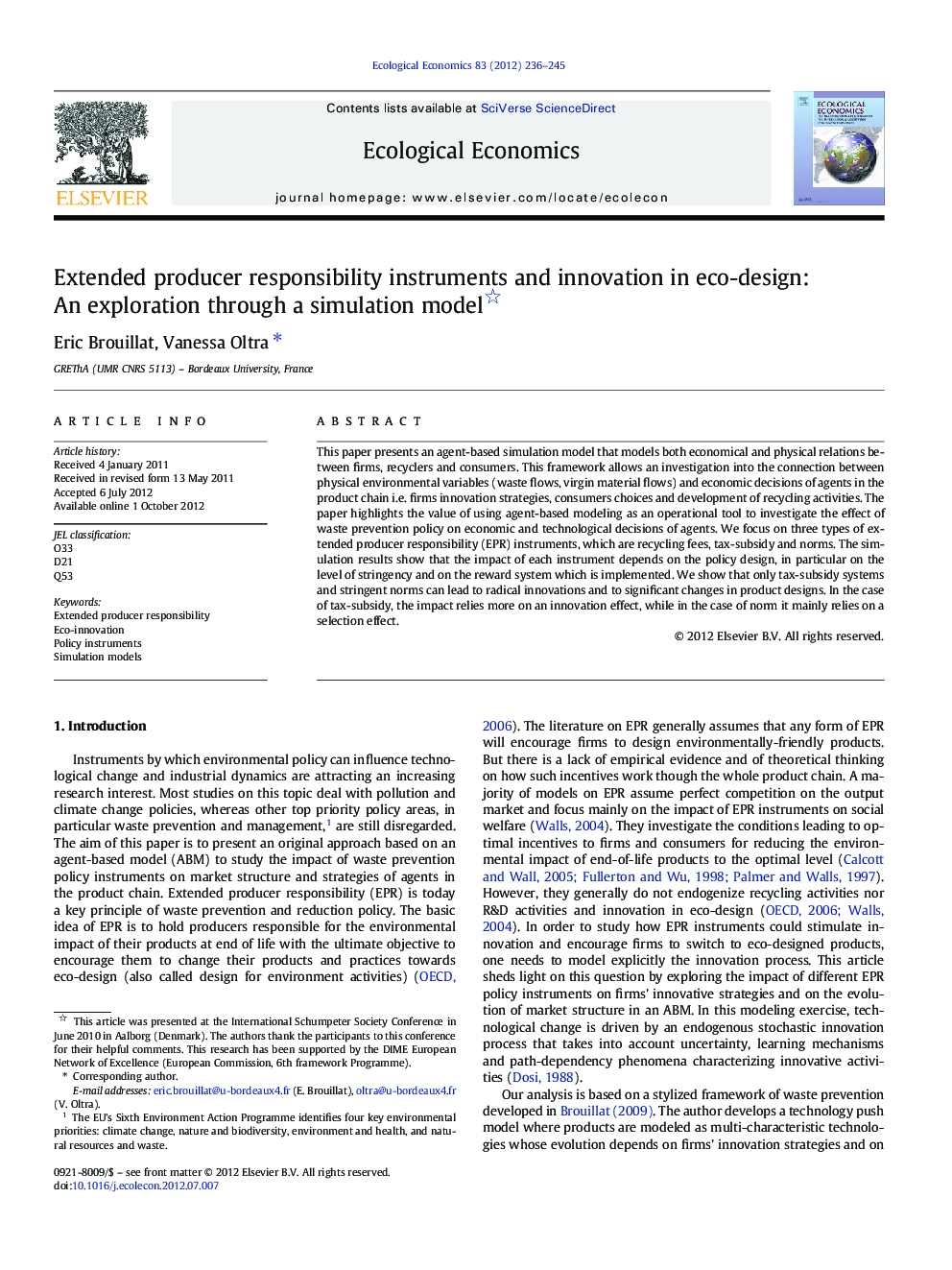| Article ID | Journal | Published Year | Pages | File Type |
|---|---|---|---|---|
| 5050038 | Ecological Economics | 2012 | 10 Pages |
This paper presents an agent-based simulation model that models both economical and physical relations between firms, recyclers and consumers. This framework allows an investigation into the connection between physical environmental variables (waste flows, virgin material flows) and economic decisions of agents in the product chain i.e. firms innovation strategies, consumers choices and development of recycling activities. The paper highlights the value of using agent-based modeling as an operational tool to investigate the effect of waste prevention policy on economic and technological decisions of agents. We focus on three types of extended producer responsibility (EPR) instruments, which are recycling fees, tax-subsidy and norms. The simulation results show that the impact of each instrument depends on the policy design, in particular on the level of stringency and on the reward system which is implemented. We show that only tax-subsidy systems and stringent norms can lead to radical innovations and to significant changes in product designs. In the case of tax-subsidy, the impact relies more on an innovation effect, while in the case of norm it mainly relies on a selection effect.
⺠We investigate the effect of waste prevention policy on economic and technological decisions of agents in the supply chain. ⺠We use an agent-based model that models three types of extended producer responsibility instruments. ⺠Only tax-subsidy systems and stringent norms can lead to radical innovations and to significant changes in product designs. ⺠Regarding tax-subsidy, the impact relies on an innovation effect, while it relies on a selection effect with norms.
